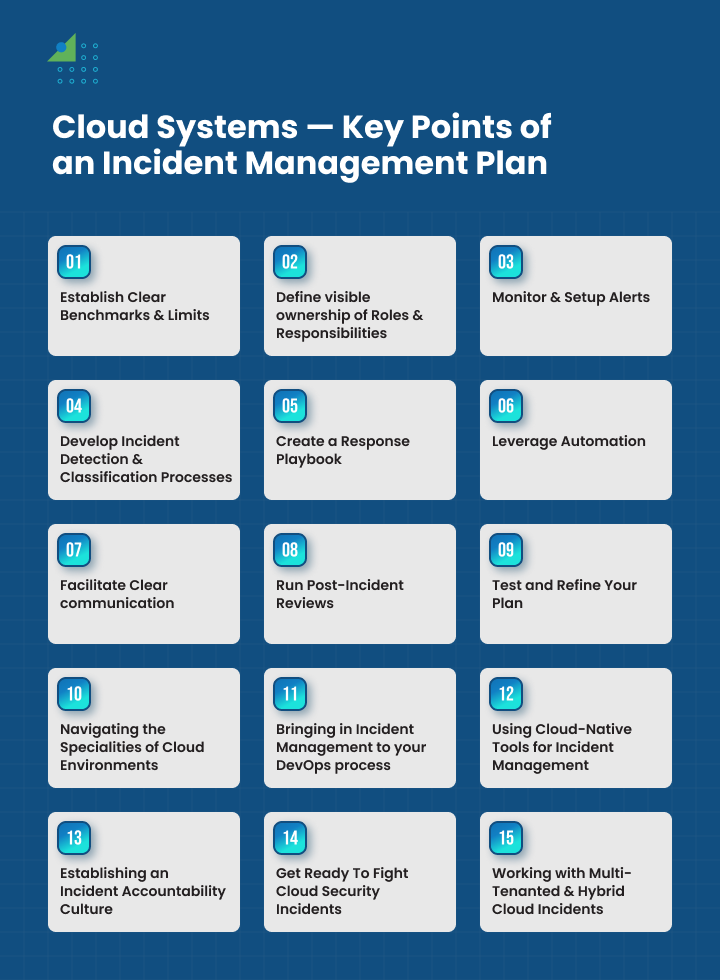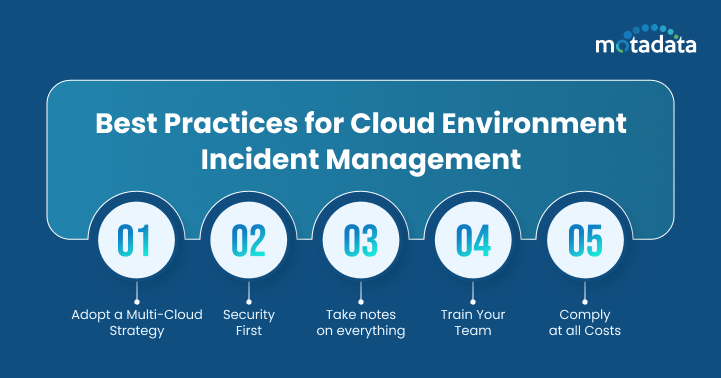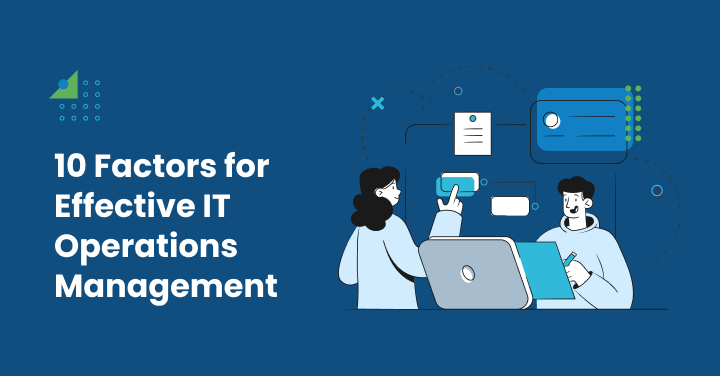The digital-first age means that for modern businesses, cloud environments are the bloodline of an organism. Scalability, flexibility, and low cost allow organizations to innovate and iterate at a level never seen before.
But with great power comes excellent oversight. Outages, security breaches, performance degradation, and misconfigurations are the incidents that can hit cloud environments at any time and cause lost revenue, reputational damage, and financial losses.
This is Critical to effectively planning an Incident Management Plan (IMP). A meaningful IMP will enable your Organization to quickly and effectively discover, react to, and remediate incidents in cloud environments at minimal scale outages with the least tarnish to customer trust.
Understanding the Intent Behind the Search
In any discussion to delve into specifics, we must first appreciate a searcher’s intent for “Building Effective Cloud Incident Management Plan: How To?. The following are usually assumed categories of these patrons precede in typical,
Cloud infrastructure and IT device Masters / Cloud Engineers – people keeping cloud services available.
- Incident Management: DevOps Teams wishing to incorporate their CI/CD pipelines Decision-makers look at what a well-managed incident management can do, i.e., improving business continuity & customer satisfaction.
- Security folks: People who care for vulnerabilities and areas of security incident handling in the cloud.
It is essentially looking for a practical how-to guide on how to create a solid incident management plan that addresses the particular difficulties of the cloud. So, with this in mind, let us break down the vital elements of an efficient IMP.
Cloud Systems — Key Points of an Incident Management Plan
1. Establish Clear Benchmarks and Limits
The first part of creating IMP is to decide where you want to reach and the scope of your goals/achievements. Ask yourself:
- Identify the type of incidents you wish to catch (outages, security holes, etc.)
- Can provide Scope for which cloud services and environments This is AWS Azure Google Cloud
- Your recovery time objectives (RTO) and recovery point objectives (RPO), broken goals
- Well bounded would you help your IMP to cruise in the right direction and business horizons align
2. Define visible ownership of Roles and Responsibilities
In incidents, we are all guilty as incidents are the incidents. Do incident culture Define “roles” for specific responsibilities and a focused mitigation (Common Roles
- Incident Manager: acts as the process owner to resolve the incident.
- Level of technology: Cloud Engineers — Automated Technical Troubleshooting & Resolution.
- Security Analysts: For the sake of security incidents.
- MRE-Communications Lead: The MES internal and external voice.
In your Playbook or Runbook, create these Roles so everyone knows exactly what tasks need to be done for an incident
3. Monitor (and Setup Alerts)
Cloud: proactive monitoring must be enforced as a must in the cloud environment; but don’t use a roach motel, i.e. (Eg: AWS CloudWatch, Azure Monitor / Service Bus, Google Cloud Operations Suite) or otherwise suck on your favorite 3rd party solution:
- Evaluate system performance, resource consumption, and health of the app
- When we see patterns, trigger alerts for considerable traffic or suspicious logins.
- Enable out-of-the-box alerts in incident management platforms such as PagerDuty (PaaS), Opsgenie, or any among ServiceNow.
4. Develop Incident Detection and Classification Processes
Not all incidents are created equal. Classify incidents based on their severity and impact:
- Critical: System-wide outage or security breach.
- High: Significant performance degradation or partial outage.
- Medium: Minor issues affecting a subset of users.
- Low: Non-urgent problems with minimal impact.
Use this classification to prioritize responses and allocate resources effectively.
5. Create a Response Playbook
A response playbook is a step-by-step guide for handling specific incidents, ensuring smooth operations with effective data management services.
- Initial Assessment: How to verify and assess the incident.
- Containment Steps: Actions to prevent the incident from escalating.
- Resolution Steps: Detailed instructions for resolving the issue.
- Post-Incident Actions: Steps for documenting the incident and conducting a post-mortem analysis.
For example, if a cloud storage bucket is accidentally exposed to the public, the playbook should outline steps to restrict access, audit permissions, and notify affected stakeholders.
6. Leverage Automation
Automation can significantly reduce response times and human error. Consider automating:
- Incident Detection: Use AI/ML tools to detect anomalies and trigger alerts.
- Response Actions: Automate routine tasks, such as restarting services or scaling resources.
- Communication: Automate notifications to stakeholders and update incident statuses in real time.
7. Facilitate Clear communication
During an incident, communication is essential. Define Open/Robust Channels of Communication and Procedures:
- Intranet Communication: Communicate via collaboration tools like Slack or Microsoft Teams to align the response team.
- External Communication: Notify your customers and other stakeholders immediately, and keep them informed until the incident is fixed.
Even in challenging circumstances, building trust requires transparency.
8. Run Post-Incident Reviews
Always an opportunity to learn and grow from an incident. Post-incident review (call it what you like): do this one:
- Decompose what happened and why.
- Audit your IMP for gaps.
- Once again, capture lessons learned and refresh your playbooks.
- Bring the results as a team to build a work culture for continuous improvement.
9. Test and Refine Your Plan
An IMP is only as good as the way you implement it. Test your plan regularly with:
- Tabletop Exercises : Pretend an incident to see how well your team is prepared.
- Drills (real-world scenarios): Test your response processes
- Chaos Engineering: With Chaos Engineering, intentionally induce cloud weaknesses.
Take the results of these tests and refine your IM.P
10. Navigating the Specialities of Cloud Environments
- Cloud provider: Lastly, put some skin in the game on the shared responsibility model.
- Infrastructure as a Service: Break out of the encapsulation to Soak Longer with Ephemeral Resources
- Global Reach: Dive into the nuances of dealing with issues within multiple regions/availability zones
11. Bringing in Incident Management to your DevOps process
- Shift-Left: Integrate incident management into the development process to capture issues in advance.
- CI/CD Pipelines automate the detection & resolution of incidents within continuous integration and delivery pipelines.
- Infrastructure as Code (IaC): Use IaC tools, such as Terraform or CloudFormation, to ensure a consistent and reproducible environment
12. Using Cloud-Native Tools for Incident Management
- AWS—AWS Tools: For incident management, use AWS CloudTrail, AWS Config, and AWS Systems Manager.
- Azure Tools: Pinpoint Azure Sentinel, Azure Security Center, and Azure Logic Apps.
- Google Cloud: Cloud Logging and Monitoring with Google Cloud Tools
13. Establishing an Incident Accountability Culture
- Blameless Post-Mortems: The team focuses on learning and ndoes ot take any blame for an incident.
- Incident Metrics: Monitor essential performance metrics of Mean Time to Detect (MTTD) and Mean Time to Resolved (MTTR)
- Recognition and Rewards: Reward teams/individuals who keep incidents in control.
14. Get Ready To Fight Cloud Security Incidents
- Detect Threats: Tackle the challenge using AWS GuardDuty, Azure Security Center, or Google Chronicle.
- Breach Incident Response: process for containment and mitigation of security breaches
- Compliance and Auditing: Ensure your IMP complies with security frameworks such as NIST, SOC 2, or CIS Benchmarks.
15. Working with Multi-Tenanted and Hybrid Cloud Incidents
Tennant Environments: Focus mainly on the challenges of shared cloud resources.
Hybrid Cloud Situations: Figure out ways of dealing with incidents on-premises and in the cloud
Third Party: Anticipate the impact of incidents arising from the service/ API you use in 3rd party.
Incident Priority and Severity Scoring in SecOps!
Best Practices for Cloud Environment Incident Management
1. Adopt a Multi-Cloud Strategy:
Relying on one specific cloud vendor is a significant risk. A multi-cloud strategy allows redundancy and lessens the severity of outages particular to each provider.
2. Security First:
Mandatory security components include encryption, identity access management (IAM), and regular vulnerability assessments.
3. Take notes on everything:
You should Have in-depth information about your cloud architecture and configurations, incident response, and how the process works.
4. Train Your Team:
Encourage regular training on incident management procedures and recent cloud technologies.
5. Comply at all Costs:
Ensure your IMP complies with industry laws and regulations.
Conclusion
Implementing an efficient incident management plan for cloud environments is not something you do only once.
It’s a dynamic that needs tuning over and over again into a process of continuous improvement. Implement the steps mentioned in this article to develop an effective IMP that will ensure your organization is always ready for any kind of incident, whether simple or complex and volatile.
Just remember that incident management aims to solve problems and lessen their effect on your business and even customers.
You can use this to leverage any eventual disaster as the perfect opportunity for your organization to show how resilient and reliable you are.









